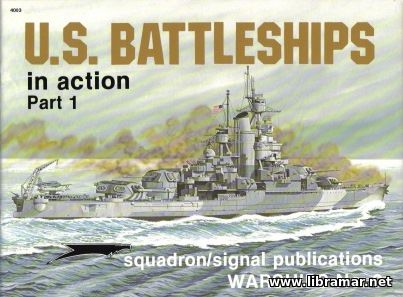 The present set consists of two separate books with the content dedicated to the battleships of the American Navy fleet which fought in the Second World War. This is the important part of the naval history. These books were written by Robert C. Stern and perfectly illustrated by Don Greer. It will definitely be interesting to everyone who likes history due to the numerous famous battleships mentioned by author.
The first book addresses the so-called "old" battleships, i.e. ones built before the Washington Treaty. The second book is dealing with three major classes of "fast" battleships. The narrative text of both publications included in the volume is covering the technical development and influences of each of the classes and when/where they saw the action. The content of these volumes is capturing the critical updates that have been made to the ships of the Iowa class.
The documents include numerous ship line drawings that are showing the side views, all modification made to the hulls, missile launchers and radars plus other installed equipment. Plenty of photos demonstrating the different gunwork mounts and interior of the sixteen-inch turret have also been provided. The book is perfect for the ship modelers, naval historians, enthusiasts and even general readers.
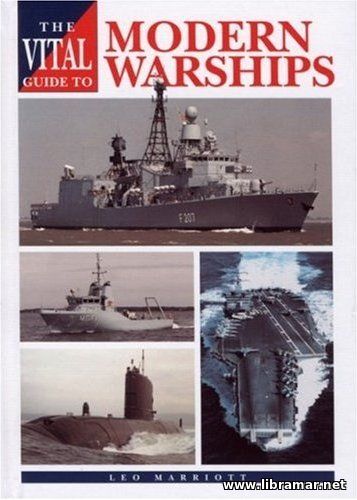 The warships of today are extremely complex constructions. The last forty years showed the significant changes and rapid technical development in such shipbuilding-related fields and propulsion, electrics and electronics, hydrodynamics, and many others, and all of these developments were applied in order to make each newly constructed vessel more effective in comparison with the predecessor.
The present publication is providing the readers with a representative sample of contemporary warships; it should be understood, however, that it is absolutely impossible to describe every single type of warship currently in use, in a single volume like this, because there are hundreds of types of warships and submarines in service. That is why some selection was made by the author of the volume to get to the manageable proportions.
The guide provides all necessary information about the warships including their technical specifications, armament, information on the shipyard where particular vessel was built, and some historical information about the service. This book is an excellent source of information for every fan of naval vessels and we highly recommend it to be placed in your collection.
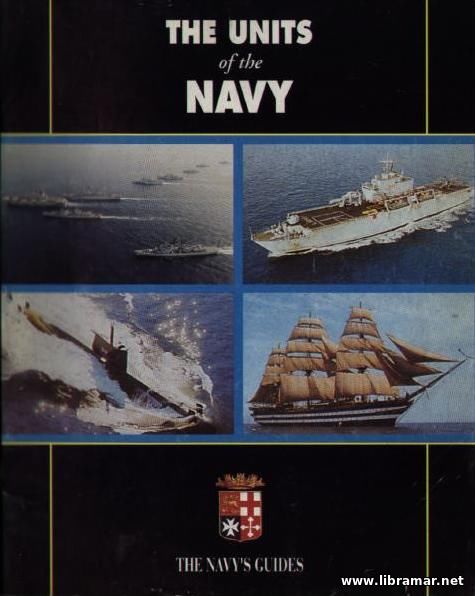 At the end of the Second World War, Italy was no longer a naval power. Besides the many months of long conflict against the Allies - which has caused heavy losses of men and equipments - there were problems ensued from the armistice of September 8th, 1943-Recalling the 37,000 miles sailed during the conflict, the loss of 270,000 tons of warships and the sinking of 412,000 tons of enemy vessels, it's possible to note the Royal Italian Navy became a cornerstone and a starting point from which the Nation was capable to rebuild her fortune.
On the VE-Day (May 8th, 1945), though the Royal Italian Navy had been almost destroyed after five years of war, she was the sole organization able to grant some kind of continuity. The remaining naval forces were relevant as a whole, but most of the ships were too old and in poor conditions. They were: two battleships (Italia and Vittorio Veneto), three older ones which had been refitted 10 years earlier (Andrea Doria, Caio Duilio and Giuliu Cesare), nine cruisers, eleven destroyers, thirty six submarines and an average of forty composed by escort vessels and corvettes, forty-four fast Patrol Boats and fifty minesweeper and sixteen landing traits. There were also a number of ocean-going, coastal and inshore auxiliaries among which the bail training ships Amerigo Vespucci and Cristoforo Colombo.
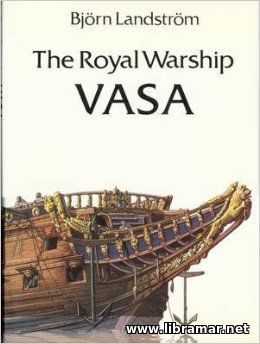 The book is covering the construction and embellishment plus the armaments and rigging of the famous Swedish warship Vasa. Throughout the major part of the XVI century, marine warfare comprised actions at close quarters with the quite small-caliber cannons, boarding plus hand-to-hand combats. Only galleys, with their few but heavy cannon, could sink enemy vessels, but a galley was at a disadvantage if an action led to boarding.
In very light winds or flat calms, when other vessels lacked steerage-way. galleys had an edge on their opponents. The area of their operations was principally the Mediterranean, and then only during the summers, when winds were light; the French had both Atlantic and Mediterranean coasts, and it is quite possible that they introduced galleys in actions in the English Channel. We know-that galleys were built in England in the mid-sixteenth century, but they never acquired any real importance in the windswept waters of north-west Europe.
In the beginning, namely first half of the XVI century, carracks were the largest warships that still relied only on the wind as a motive force. Originally they were straightforward roundships that had gradually developed from the cargo vessels of antiquity; they were seriously differing from the relatively small roundships of the northern Europe and Mediterranean primarily in their size and also armament...
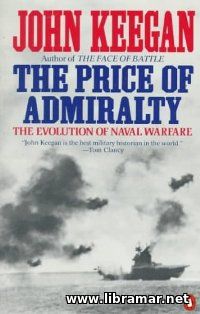 This title is one of the earliest classics by John Keegan. In his publication, the author did his very best to closely analyze the most famous sea battles of the past. He excels in presenting very concise and clear descriptions. It will definitely be very pleasant not to be burdened with lots of terminology for any land-rubber. It is really a great work for general reader of the present subject as the book is quite easy to read and to understand.
The publication has been already well met by the readers and considered a true classics of naval history because of its deeply penetrating gaze and soaring prose. The author of the title is a really unconventional naval historian offering his readers completely original thesis of the naval warfare of the past not only through the assessment of the gains of the navies, but also based in the trends in each of the eras.
The author is exploring the very meaning of the "command of the seas" term striving to properly understand if any navy in the history of the mankind could lay the claim on it. The document includes literally all information that a good volume of subject history shall contain. The content includes biographies of the prominent people and even some anecdotes enlighting the dry history, supplemented with the overviews of the naval periods covered, descriptions of the battles, associated figures and facts etc.
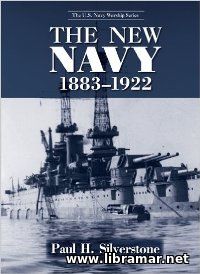 The content of this volume was prepared and compiled by Paul Silverstone, and presents readers a perfect and useful list of the vessels that operated in the historical period between 1883 and the First World War. The information provided in the publication is supplemented with the number of photographs.
The book includes a list of SP class ships, they are sorted separately by name and by hull number. In addition, there are listings for the US Army ships, NOTs, plus the Royal Hawaiian Army. This is the third book of The USN Warship Series - as the name implies, the author covered the fifty-year period of time, 1883-1922.
The readers may look at this book as at the great compendium of the naval vessels of the covered historical period. The text is supplemented with the images of the vessels. The vessels constructed in a few years following the famous decision of the Congress to order the removal of all obsolete vessels and all navy vessels of the American Navy fleet since then have actually stemmed from those three ones - they participated in the American-Spanish War; in fact, the success of the naval victories and acquisition if the overseas areas were actually the impetus to the establishment of the large naval ship construction program...
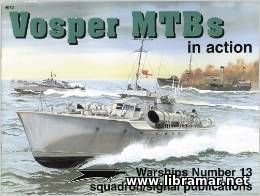 The British Navy built and used their own MTB, standing for the Motor Torpedo Boats - throughout the World War Two. Those boats served in the English Channel, Atlantic, Pacific, and the Mediterranean. This publication by T. Garth Connelly and Don Greer provides an excellent review of the boat types, their use and history. It contains many perfect and clear black-and-white photos demonstrating the typical construction of the MTBs, their interior, exterior, engines, weapons.
There is also plenty of statistics and data, operational stories, and two pages of color plates. This book will obviously be very useful for everyone interested in naval history as well as for the ship model makers since there are so many photos plus color drawings. It's a compact but comprehensive volume giving a good summary with lots of image content and detailed plans that will be appreciated by the ship modelers.
The history told in the pages of this publication will make all readers go into the deeper reading about the naval warfare of the Second World War, and British Forces, in particular. As per the reviews, nothing in the content of this book is redundant or out of place, and the style of presenting the material is excellent making this book world popular among the professionals and enthusiasts of the naval history and warfare.
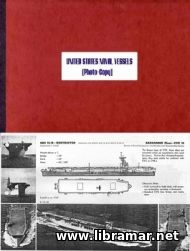 The present naval publication comprises several official manuals that have been duly compiled on the basis of the information obtained from numerous official sources. In fact, this is the reprinting of a standard United States Naval Manual giving an excellent representation of the American Navy Fleet at the very end of the World War Two.
It will definitely serve as a very valuable reference book for everyone who is seriously interested in the US Naval forces. The document is intended to be used as a textbook in the official recognition courses since it will be providing all specialists of the naval warfare and just enthusiasts with the readily available technical materials in a single title. The fundamental principle of the vessel recognition is the familiarity with the "total form" of the observed object.
The real character of the vessel cannot be actually determined by one or few featured; it shall rather be done by the familiarity that can be had with the mass of the hull of the vessel taken together with the superstructure to be viewed from greater distances. The salient characteristics of the vessel recognition are demonstrated in their simplest possible forms by silhouettes... Take a look in this document and find out the rare and useful technical information...
« 1 2 3 4 5 6 ... 10 11 » |







